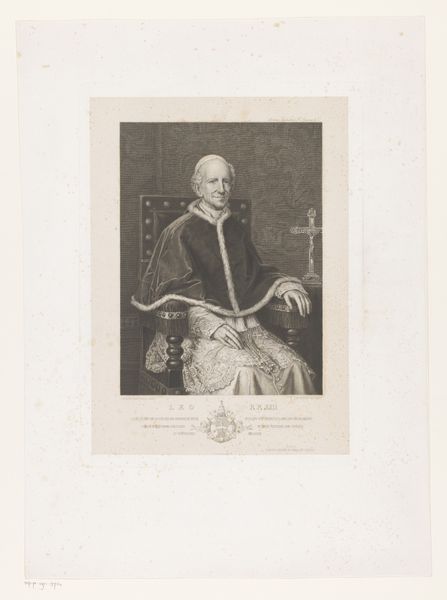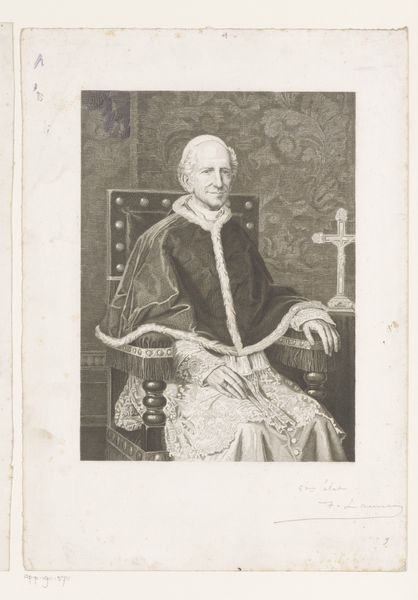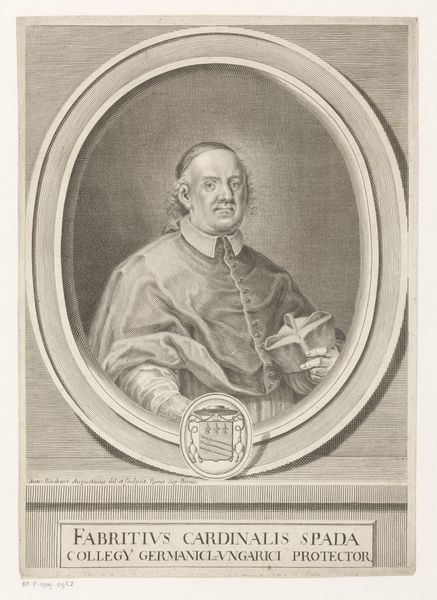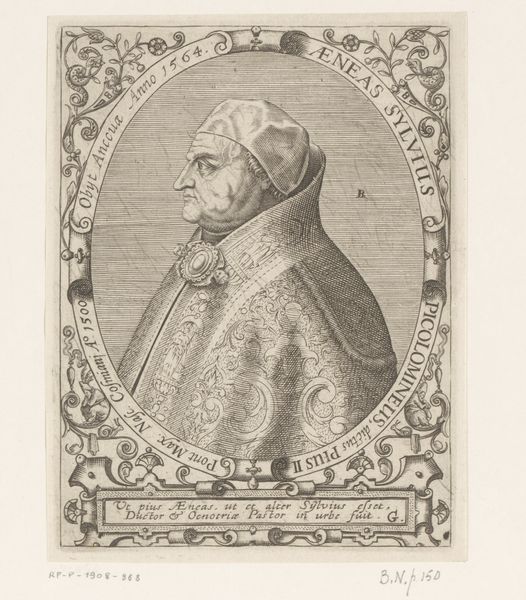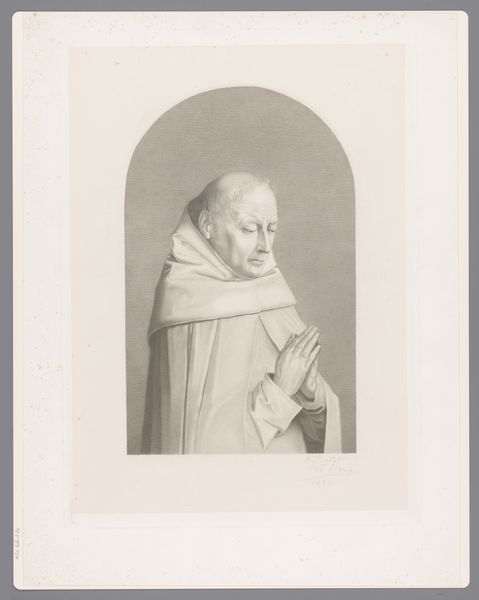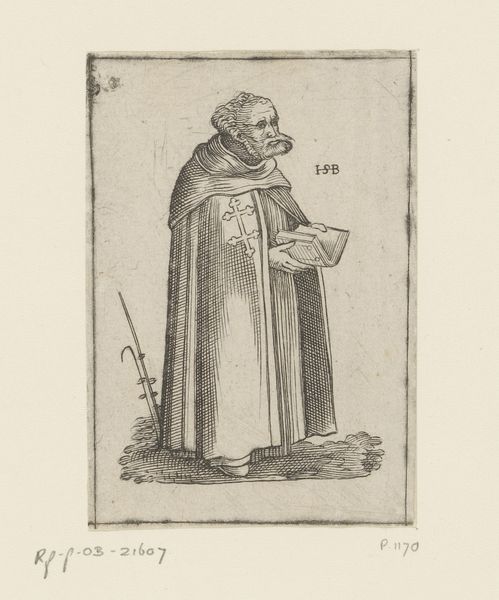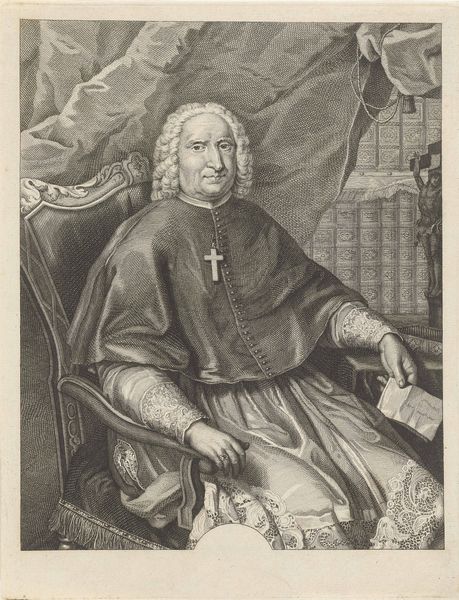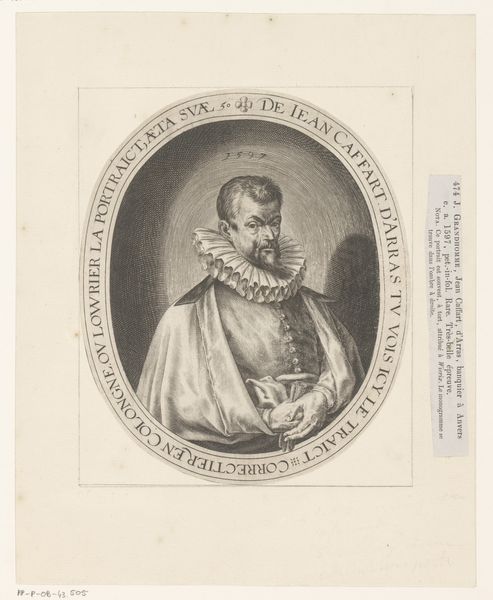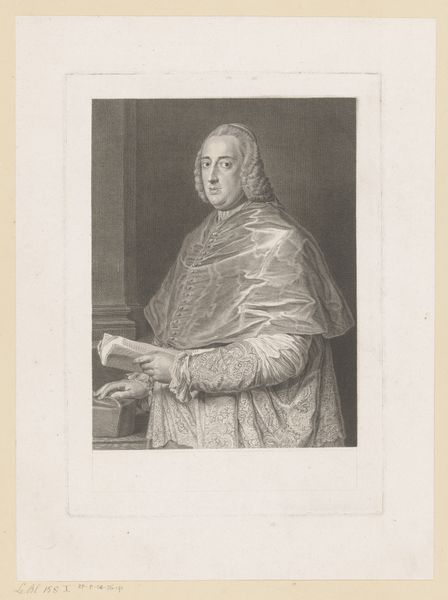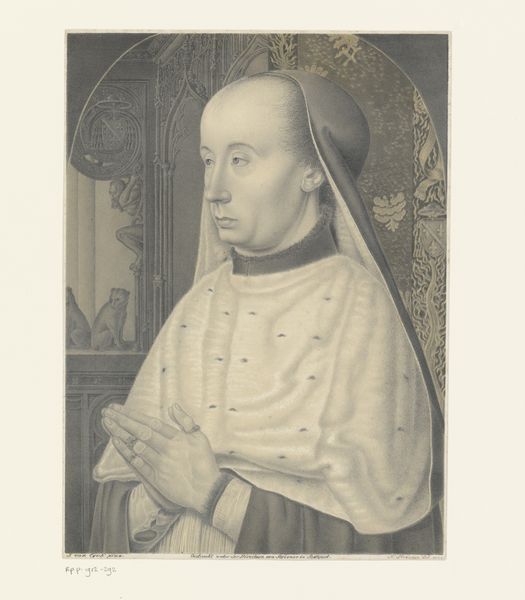
print, engraving
#
portrait
# print
#
19th century
#
history-painting
#
academic-art
#
engraving
#
realism
Dimensions: height 583 mm, width 435 mm
Copyright: Rijks Museum: Open Domain
Edvard Lehmann made this lithograph portrait of Matthaeus Yrsselius. Lithography is a printmaking technique using a flat stone or metal plate, where the image areas are worked on with a greasy substance so that the ink will adhere to them, while the non-image areas are made ink-repellent. Look closely, and you'll see the subtle tonal gradations achieved through this method. The choice of lithography, rather than a more conventional painting or engraving, speaks volumes. It's a process born of industrialization, capable of producing multiple images efficiently. Lehmann was not just creating a portrait; he was participating in a new mode of visual production, one that democratized images and made them accessible to a wider audience. The social context is important here. Lehmann's embrace of lithography aligns him with a modern sensibility, challenging the traditional hierarchy between fine art and reproductive craft.
Comments
No comments
Be the first to comment and join the conversation on the ultimate creative platform.
